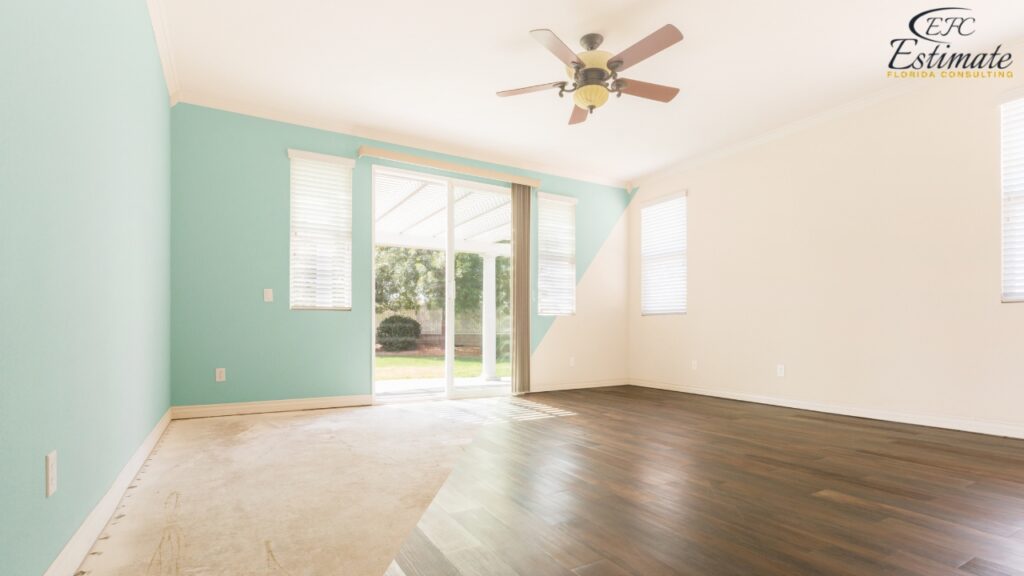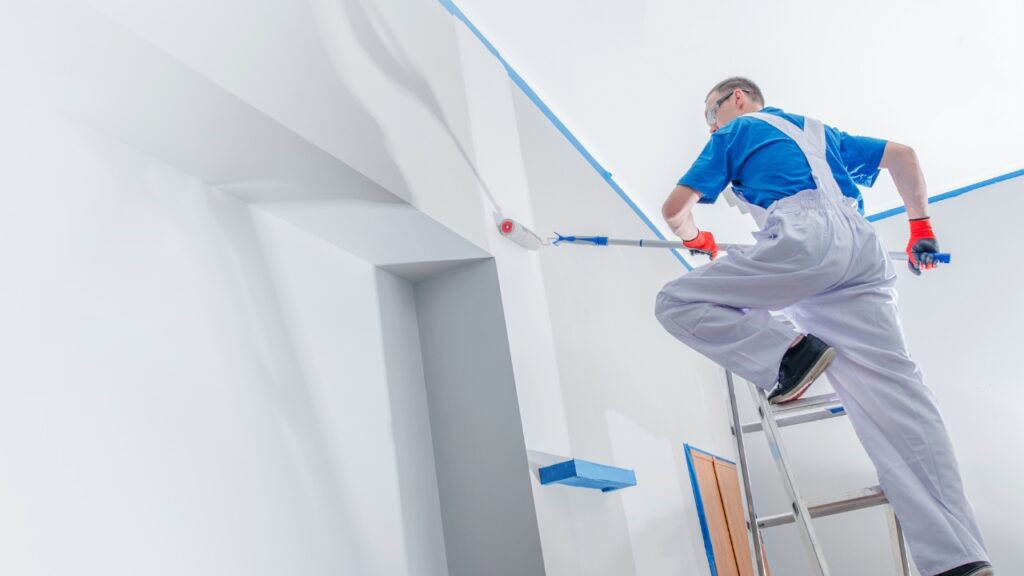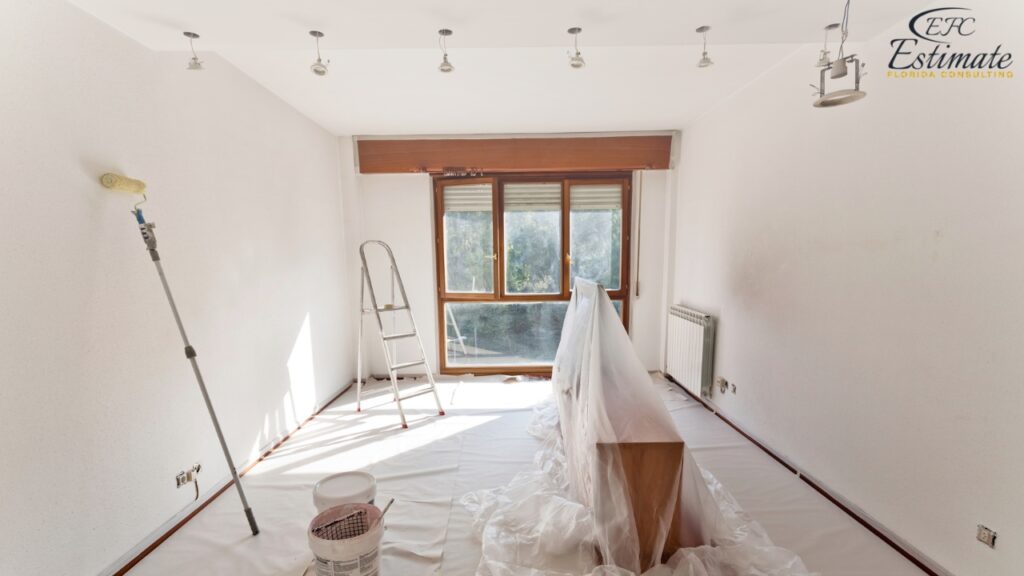How Much Does It Cost to Paint a 3,000 Sq Ft House Interior?
The cost of painting a 3,000 sq ft house interior varies based on several factors. The size and complexity of the job significantly influence costs, as larger homes and intricate designs require more paint and labor. Quality of paint also impacts the budget, with economy paints costing $26-$46 per gallon, mid-grade paints $46-$78, and high-end paints $78-$130. Labor costs range from $7,800 to $23,400, depending on painter experience and location. Preparation work, essential for a high-quality finish, can add $1,300 to $3,900. Additional features like painting ceilings, trim, doors, and cabinets further increase costs. Overall, a comprehensive painting project can range from $18,395 to $48,750.

Factors Influencing the Cost of Painting a House Interior
Size and Complexity of the Job
The size of your house is the most significant factor in determining the cost of painting. A 3,000 square foot house interior requires a substantial amount of paint and labor. However, other aspects such as the number of rooms, ceiling height, and the complexity of the job (e.g., intricate trim work or multiple colors) can also affect the total cost. Complex designs or additional elements like wainscoting and crown molding will require more time and precision, increasing labor costs. Additionally, larger homes often have higher ceilings, which can add to the complexity and duration of the project, further driving up costs. The intricacy of the work needed, such as custom wall textures or decorative finishes, can also influence the total expenditure, as these require specialized skills and more time to complete.
Quality of Paint
The quality of paint you choose plays a significant role in the overall cost. Higher quality paints offer better coverage, durability, and finish but come at a higher price. Here’s a rough estimate of paint costs per gallon:
- Economy Grade Paint: $26 – $46 per gallon. This type of paint is cost-effective but may require more coats to achieve a uniform finish, increasing labor time. It is often less durable, which might lead to earlier touch-ups or repaints.
- Mid-Grade Paint: $46 – $78 per gallon. Mid-grade paint strikes a balance between cost and quality, offering decent coverage and durability for most interior applications. This category is popular for providing a good finish and reasonable longevity without breaking the bank.
- High-End Paint: $78 – $130 per gallon. High-end paints provide superior coverage and finish, often requiring fewer coats. They are more resistant to stains and fading, making them ideal for high-traffic areas and rooms exposed to sunlight. These paints also typically contain fewer volatile organic compounds (VOCs), contributing to a healthier indoor air quality.
Choosing a higher quality paint can reduce the frequency of repainting and maintenance, ultimately saving money in the long run. High-quality paints also tend to be more eco-friendly, with lower VOC levels, contributing to a healthier indoor environment. Furthermore, premium paints often come with warranties that guarantee their performance for several years, providing added peace of mind.
Labor Costs
Labor costs can vary widely depending on your location and the experience of the painters. On average, professional painters charge between $2.60 and $7.80 per square foot, which includes preparation, painting, and cleanup. For a 3,000 square foot house interior, labor costs alone can range from $7,800 to $23,400. Experienced painters may charge more, but their expertise can ensure a smoother, more durable finish. Additionally, professional painters are likely to work more efficiently, completing the job in less time without compromising on quality.
Labor costs are influenced by several factors, including the time of year, the painter’s availability, and the project’s urgency. High-demand seasons or urgent jobs may incur higher charges. It’s important to get multiple quotes from reputable painters to compare prices and services, ensuring you get the best value for your money. Additionally, considering the painter’s portfolio and reviews can provide insights into the quality of their work, which can justify the cost.
Preparation Work
Preparation work is essential for a high-quality paint job. This includes moving furniture, repairing walls, sanding, priming, and protecting non-painted surfaces. The extent of preparation required will impact the overall cost. Extensive preparation can add $1,300 to $3,900 to the project. Proper preparation ensures that the paint adheres well and that the finish is smooth and long-lasting. Neglecting this step can lead to peeling, bubbling, and other issues that may require costly repairs down the line.

In addition to basic preparation, some homes may require more extensive work, such as removing wallpaper, addressing moisture problems, or fixing structural issues. These additional tasks can significantly increase the overall cost but are necessary for a successful and durable paint job. The condition of the walls and ceilings will also determine the level of preparation needed. Homes with older or damaged surfaces may need extensive patching and sanding, adding to the overall expense but ensuring a flawless final result.
Additional Features
Including additional features can enhance the functionality and aesthetics of your painted house interior but also increase the cost. Some features to consider are:
- Ceilings: $1.30 – $2.60 per square foot. Painting ceilings can be more challenging than walls, requiring additional preparation and specialized techniques to achieve a smooth, even finish. The texture and height of the ceilings can further complicate this task.
- Trim and Baseboards: $1.30 – $3.90 per linear foot. Detailed trim work adds a polished look to your rooms but requires precision and care to avoid drips and smudges. The intricacy of the trim design and the amount of trim in the home can significantly influence the labor costs.
- Doors: $65 – $195 per door. Doors often have intricate details and require careful painting to ensure a smooth, professional finish. The type of doors, such as panel doors or French doors, can affect the time and cost required for painting.
- Cabinets: $65 – $156 per cabinet. Painting cabinets can be labor-intensive, especially if they need to be sanded, primed, and disassembled. However, updating cabinet colors can dramatically change the look of your kitchen or bathroom. High-quality finishes on cabinets can enhance their durability and appearance, making this a worthwhile investment.
These additional features contribute to a more cohesive and aesthetically pleasing result but require more time and materials, increasing the overall project cost. Considering these details when planning your project can help you achieve a comprehensive and harmonious interior design.
Detailed Cost Breakdown for Painting a House Interior
Here’s a detailed cost breakdown for painting a 3,000 square foot house interior:
Cost Component | Estimated Cost |
Paint (Mid-Grade) | $1,365 – $2,340 |
Labor | $7,800 – $23,400 |
Preparation Work | $1,300 – $3,900 |
Ceilings | $3,900 – $7,800 |
Trim and Baseboards | $1,950 – $5,850 |
Doors | $780 – $2,340 |
Cabinets | $1,300 – $3,120 |
Total | $18,395 – $48,750 |
This comprehensive breakdown covers the major components of an interior painting project, helping you understand where your money will go and allowing for more accurate budgeting. Each component plays a critical role in achieving a high-quality, professional finish that enhances the appearance and value of your home. A detailed understanding of these costs allows homeowners to prioritize aspects of the project and make adjustments to fit their budget without compromising on quality.
Get 5 New Leads Next 7Days With Our System
- Multi-Family Building
- Hotel Building
- Hospital Building
- Warehouse Building
- High-Rise Building
- Shopping Complex
Examples of Total Costs for Painting a House Interior
To provide a clearer picture, here are some examples of total costs for different scenarios:
Basic Painting Job (Economy Grade Paint, Minimal Preparation)
- Low-end: $18,395
- High-end: $26,000
This scenario includes the most basic materials and labor, with minimal attention to additional details or features. It’s a cost-effective solution for refreshing the interior but may not offer the durability and finish of higher-end options. The focus here is primarily on achieving a clean, fresh look without extensive customization or premium finishes.
Standard Painting Job (Mid-Grade Paint, Standard Preparation)
- Low-end: $26,000
- High-end: $39,000
A standard painting job includes mid-grade paint, reasonable preparation work, and basic attention to additional features like trim and baseboards. This option balances cost and quality, providing a durable and attractive finish suitable for most homes. It typically involves moderate customization and attention to detail, ensuring a satisfactory result without excessive expenditure.
High-End Painting Job (High-End Paint, Extensive Preparation, and Additional Features):
- Low-end: $39,000
- High-end: $48,750
A high-end painting job involves top-quality materials, extensive preparation, and meticulous attention to detail for features like ceilings, trim, and cabinets. This option ensures the highest level of finish and durability, ideal for homes where appearance and longevity are paramount. It includes high-end customization, premium finishes, and detailed workmanship, resulting in a luxurious and enduring interior.
These estimates provide a baseline for budgeting your project. Actual costs may vary depending on specific project requirements and local market conditions. It’s essential to obtain detailed quotes from multiple contractors to get an accurate understanding of the potential costs for your painting project. This helps in making informed decisions and ensuring that the project stays within the desired budget while achieving the expected quality.
Cost Considerations by Region for Painting a House Interior
The cost of painting can vary significantly depending on your location due to differences in labor costs, materials, and local economic conditions. Here’s a brief overview of regional cost variations:
Northeast
Generally higher costs due to labor and material expenses. Expect to pay 10-20% more than the national average. The higher cost of living in this region often translates to increased labor and material costs. The dense population and high demand for skilled labor can also contribute to higher prices for painting services.
Midwest

More affordable, with costs typically 5-15% lower than the national average. The lower cost of living and abundant availability of materials can help keep prices more reasonable in this region. The competitive market and accessibility of labor and supplies make it easier to find cost-effective painting solutions.
South
Moderate costs, often close to the national average. The warm climate and steady housing market contribute to stable pricing for painting services. The availability of local contractors and materials helps maintain competitive pricing while ensuring quality work.
West
Higher costs, similar to the Northeast, with variations depending on the urban or rural setting. Coastal areas and major cities tend to have higher labor and material costs, while rural areas may be more affordable. The cost of living, transportation, and the demand for premium services in urban centers drive up the prices in these areas.
Understanding regional cost differences can help you budget more accurately and make informed decisions about hiring local contractors. It’s also helpful to ask for local references and view previous work to ensure you’re getting the best quality for your investment. Comparing regional averages and specific contractor quotes allows for better financial planning and project management.
Advantages of Professional Painting for a House Interior
Quality and Durability
Professional painters have the skills and experience to ensure a high-quality, durable finish. They know the best techniques and products to use, which can make a significant difference in the longevity and appearance of the paint job. Professionals can also provide valuable advice on color selection and finishes, helping you achieve the desired look for your home. The use of professional-grade tools and materials ensures a superior result that is less prone to wear and tear over time.
Time Savings
Hiring professionals can save you a considerable amount of time. Painting a 3,000 square foot house interior is a big job that can take several days or even weeks if you’re doing it yourself. Professionals can complete the job more quickly and efficiently, allowing you to enjoy your newly painted home sooner. They also handle all the preparation and cleanup, saving you the hassle and ensuring a clean and professional result. This efficiency not only speeds up the project but also minimizes disruption to your daily life.
Disadvantages of Professional Painting for a House Interior
Cost
The primary disadvantage of hiring professional painters is the cost. Professional painting services can be expensive, especially for a large project like a 3,000 square foot house interior. However, the investment often pays off in the form of higher quality, durability, and overall satisfaction with the finished product. Weighing the upfront costs against the long-term benefits can help justify the expenditure.
Scheduling
You’ll need to coordinate with the painters’ schedule, which might not always align with your preferred timeline. This can be particularly challenging if you have a tight deadline or specific dates in mind. Planning ahead and booking your painting project well in advance can help mitigate scheduling conflicts. Communicating clearly with your chosen painters about your timeline can also help ensure a smoother scheduling process.
Download Template For Painting Project Breakdown
- Materials list updated to the zip code
- Fast delivery
- Data base of general contractors and sub-contractors
- Local estimators

Conclusion
Painting the interior of a 3,000 square foot house is a significant investment, but it can greatly enhance the aesthetic appeal and value of your home. By understanding the various costs involved and planning accordingly, you can ensure a successful project that meets your needs and fits your budget. Whether you opt for a basic paint job or a high-end finish with extensive features, careful planning and budgeting are key to a successful outcome. Consider all factors, from paint quality and labor to preparation and additional features, to make informed decisions and achieve the best results for your home. By doing so, you can transform your living space into a beautiful and comfortable environment that reflects your style and enhances your home’s overall value.
FAQs
Key factors include the size and complexity of the job, quality of paint, labor costs, preparation work, and additional features like ceilings, trim, doors, and cabinets.
Larger homes require more paint and labor. Intricate designs, high ceilings, and detailed trim work increase labor time and costs.
Economy paint costs $26-$46 per gallon, mid-grade paint costs $46-$78, and high-end paint costs $78-$130. Higher quality paints offer better coverage and durability, reducing long-term maintenance costs.
Professional painters charge $2.60-$7.80 per square foot. For a 3,000 sq ft house, labor costs range from $7,800 to $23,400, depending on location and painter experience.
Preparation ensures paint adherence and a smooth finish, costing $1,300-$3,900. It includes moving furniture, repairing walls, and priming surfaces.
Additional features like painting ceilings ($1.30-$2.60/sq ft), trim and baseboards ($1.30-$3.90/linear ft), doors ($65-$195/door), and cabinets ($65-$156/cabinet) increase overall project costs.
Sure! Here’s a breakdown:
- Paint (Mid-Grade): $1,365 – $2,340
- Labor: $7,800 – $23,400
- Preparation Work: $1,300 – $3,900
- Ceilings: $3,900 – $7,800
- Trim and Baseboards: $1,950 – $5,850
- Doors: $780 – $2,340
- Cabinets: $1,300 – $3,120
- Total: $18,395 – $48,750
Costs are higher in the Northeast and West, 10-20% above national averages. The Midwest is more affordable, 5-15% below national averages. The South is moderate, close to national averages.
Professionals ensure high-quality, durable finishes, save time, and handle all preparation and cleanup. Their expertise guarantees a smoother, more efficient process.
The main disadvantage is the cost, which can be significant for large projects. Scheduling can also be challenging, requiring coordination with the painters’ availability.
Google Reviews



Process To Get It Cost to Paint a 3000-square-foot House Interior Estimate Report
Here I am going to share some steps to get it cost to paint a 3000-square-foot house interior estimate report.
-
You need to send your plan to us.
You can send us your plan on info@estimatorflorida.com
-
You receive a quote for your project.
Before starting your project, we send you a quote for your service. That quote will have detailed information about your project. Here you will get information about the size, difficulty, complexity and bid date when determining pricing.
-
Get Estimate Report
Our team will takeoff and estimate your project. When we deliver you’ll receive a PDF and an Excel file of your estimate. We can also offer construction lead generation services for the jobs you’d like to pursue further.

